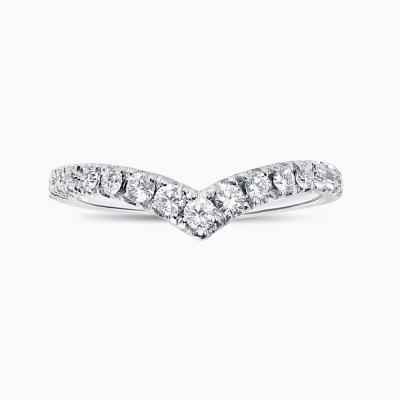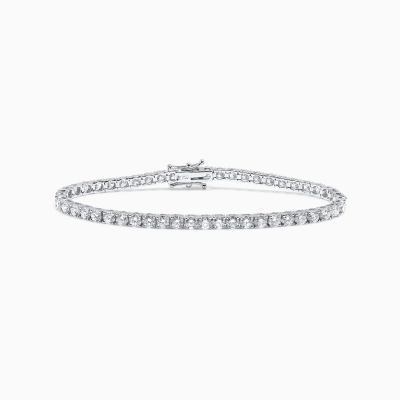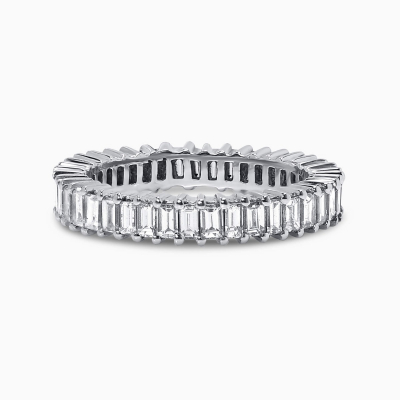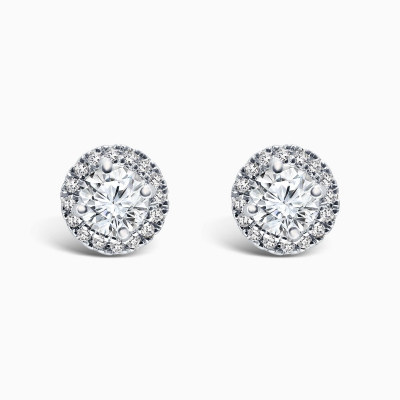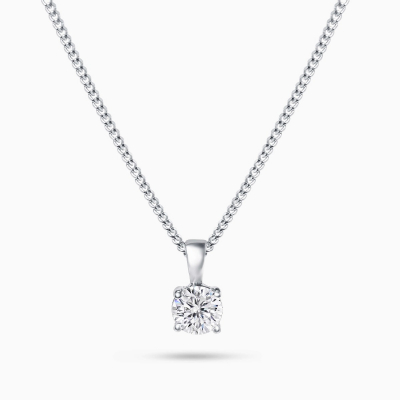GBP
/
GBP
/
Shipping to:
Currency:
round diamond
The Round diamond is considered superior to the fancier diamond shapes because of the breath-taking sparkle it provides. This is because virtually all Round diamonds are brilliant cut, which ensures maximum light reflection and brightness. Because of this, it is hardly surprising that the Round diamond is the most popular of all cuts, accounting for more than 50 per cent of diamonds sold worldwide.
Please note that when we refer to the diamond ‘cut’ in terms of the diamond’s shape, it is not to be confused with the diamond’s actual cut, which refers to the proportions of the diamond and how well polished it has been from the raw material. You can discover more about this by heading to the cut section.
01
AN INTRODUCTION
The Round diamond is unique because the propor tions of this cut maximise fire and brilliance. It is extremely versatile, boasting
a timeless and classic design. If you are struggling to choose an engagement ring for the lucky lady in your life, this is a safe bet. There are many examples of this diamond in history, but it wasn’t until 1919 that the modern Round Brilliant diamond was created.
02
FEATURES
The Round Brilliant cut is the most researched in history and it accounts for the most diamonds sold. For many, many years, diamond cutters have been attempting to optimise the brilliance and fire of this diamond by using precise mathematical calculations and advanced light reflection theories. What we are left with is a diamond that features 58 facets, or 57 if the culet is pointed, which are divided amongst the pavilion, girdle, and crown. It has a length/weight ratio of 1.00 -1.02. This cut naturally follows the rough diamond crystal, which yields maximum shine.

03
BUYING ADVICE
It is hard to go wrong with a Round diamond Engagement Rings. If you don’t know what to get your partner, a Round brilliant diamond is advisable. Boasting a classic appearance and a stunning sparkle, it is assured to impress. Most experts would agree that this diamond strikes the perfect balance between budget and colour, cut, and clarity grades. For most Round Brilliant diamonds, a four-prong setting is required, ensuring the centre stone is securely held. In some rare cases, a six-prong setting may be needed for large diamonds. The bezel setting is also very popular for this diamond cut.
Round diamonds cost more on a per carat basis than fancy shapes for two reasons; the demand for round diamonds is very high, and the yield (Yield refers to the weight of finished diamonds that are cut from the rough stone. Cutting a 1 carat diamond from a 2 carat rough stone would be a higher yield than cutting a 2 carat diamond from a 6 carat rough stone.) is relatively low. Because more of the rough stone is lost in the cutting of a round diamond, the cost of each carat retained is higher. A typical round diamond (for example; a 1.00 carat, F-color, VS2-clarity, Ex cut) may cost 25-35% more than a similar fancy shape.
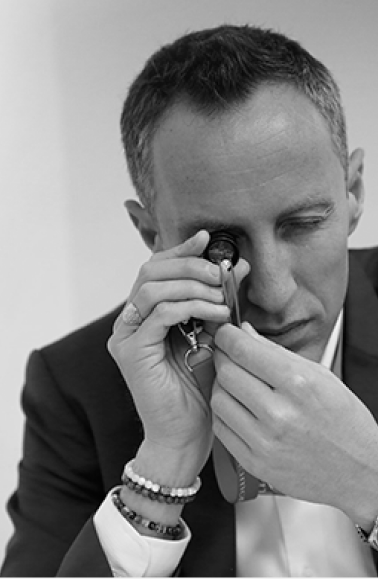
04
HISTORY
This diamond shape can be traced back to Ancient Hindu texts, when Indian fishermen would discover loose stones in the streams and rivers below the Himalayas. However, the real origins of the Round diamond cut can be traced back to the 17th century, when they were known as Mazarins. This is when more complex and refined diamond cutting techniques were used. As time went by, this diamond shape developed further.
Nevertheless, the Round Brilliant cut like we know it today did not come about until 1919 when a noted engineer and diamond cutter, Marcel Tolkowsky, published a particular mathematical computation of proportions and angles to create optimal fire and brilliance. This is why the Round Diamond can also be called the Tolkowsky Ideal cut.

WHERE NEXT?
Looking to buy a round loose diamond?
Book a visit to our London Mayfair showroom or search through our diamonds inventory online.
Contact us:+44(0) 20 3585 2295

WHERE NEXT?
Looking to buy a round loose diamond?
Book a visit to our London Mayfair showroom or search through our diamonds inventory online.
Contact us:+44(0) 20 3585 2295






